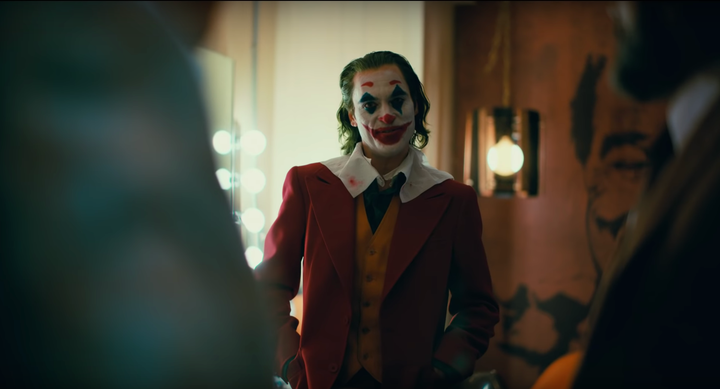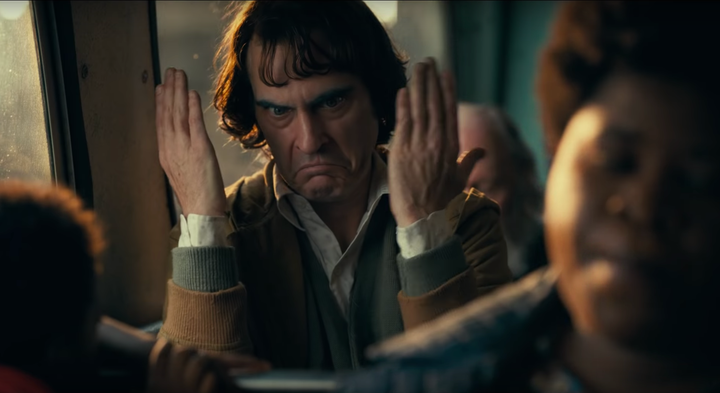
Arthur Fleck has the same problem with his social worker that the rest of us do with our therapists. “You don’t listen, do you?” he tells her. “You just ask the same questions every week — ‘How’s your job? Are you having any negative thoughts?’ All I have are negative thoughts.” Fleck is more than just depressed, he is unhinged. His journal includes pornography and entries such as “I hope my death makes more cents than my life”. When things get worse, he ditches his right hand to write with his left, “The worst part about having a mental illness is that people expect you to behave like you don’t.”
If viewed as a supervillain origin story, the staunch realism of Todd Phillips’ Joker is surprising. Joaquin Phoenix has delivered a performance that deserves both our awe and an Oscar. In the past few days, many have branded Joker dangerous. There’s a fear that involuntary celibates (incels) in the States will take to violence after watching Arthur transition to the Joker. But in the end, I’d argue, it is the film’s treatment of mental illness which makes for a debate that is relevant to more audiences.
For the latest news and more, follow HuffPost India on Twitter, Facebook, and subscribe to our newsletter.
In one of the early scenes in Joker, we see Arthur pulling faces to entertain a child. He works as a clown. He does this sort of thing for a living. The child’s mother, though, isn’t amused. She asks Arthur to leave the girl alone. Embarrassed and contrite, Arthur breaks into laughter, which despite all his effort, he cannot stop. He gives the mother a card. It says he has a condition that makes him laugh uncontrollably and inappropriately. A depressed clown who can’t stop laughing—there is irony there.
Even though the film barely examines his condition, it’s clear that Arthur suffers the pseudobulbar affect, a kind of emotional incontinence that makes patients lose control over their expressions of feeling. Arthur’s laughter, however, is not just compulsion, it is also a demand. His mother insists he smile all the time. She calls him ‘Happy’, tells him his purpose in life is to bring joy and laughter to all.
Penny Fleck (Frances Conroy) is altogether oblivious of her son’s joylessness, but it is her insistence that perhaps typifies much of what is wrong with the way we perceive mental health and with how we understand its discourse. Rather than make allowances for bad moods, we are quick to diagnose those who struggle with a despair that results from everyday living. Sadness is quick to be thought of as clinical depression, and happiness, as a consequence, is not just used as a standard, it is fetishised.
There are certainly those whose depression needs urgent psychiatric intervention (Arthur is one), but the solution for dispiritedness cannot always be a prescription for Prozac and a mood diary. Joy or positivity must not be a prerequisite for functionality. It must rather be a consequence of it. To gauge whether or not someone qualifies for mental health welfare benefits, governments the world over ask if applicants can cook, brush their teeth and care for someone in the household. Arthur doesn’t just bathe himself. He bathes his mother too. He tries holding down a job. For most part, he remains ‘sane’.
Medicines help hold up Arthur’s sanity. He takes seven different kinds of pills, but asks his social worker for more. After a government cutback, sadly, he is left without pills and his counsellor. When one of Arthur’s colleagues had given him a gun, he had said, “You know I shouldn’t have one.” That kind of awareness quickly dissipates with his medicines. Arthur invents love in his delusion. When performing as a clown in a children’s hospital, he takes his gun with him. That day, he fires the trigger.
In the world that

There’s something rather simplistic about the revenge formula, and there’s something pat about the suggestion that the world created the Joker, not Arthur. Rather than make us understand the violence Arthur commits, the film creates neat little boxes that one can check to explain his aggression. There’s injustice, penury, celibacy, yes, but more problematically, Arthur’s transition comes when he is being denied any psychiatric intervention. Left to their own devices, one would think, the mad will surely only make trouble. By inadvertently backing this view,
Forcing audiences to empathise with supervillains is undoubtedly a radical enterprise, but in the writing and directing of the film, Todd Phillips employs tropes that are so neat that they hardly ever do the Joker’s capriciousness any justice. Like violence, madness is usually also a whodunnit. With Joker, however, Phillips makes sure he again ascribes childhood abuse as a cause to Arthur’s condition(s). Much like Arthur’s mother who does not allow her son a spectrum of emotions, Phillips doesn’t allow Joker, the film or the character, the possibilities of a madness or empathy that are novel.
It’s somewhat regrettable that you’ll find the Joker’s best dialogues in other texts. In Alan Moore’s The Killing Joke, the indomitable villain says, “If I had a past, I’d prefer it to be multiple choice.” The trouble with Phillips’ origin story is that forsakes the Joker’s beguiling madness for a cause-and-effect method that is poised to encourage instant empathy, but no lasting insight. Playing the Joker in The Dark Knight, Heath Ledger had memorably said, “As you know, madness is like gravity. All it takes is a little push.” The trouble with Todd Phillips’
Shreevatsa Nevatia is the author of How to Travel Light, a bipolar memoir.
If you or someone you know needs help, mail icall@tiss.edu or dial 022-25521111 (Monday-Saturday, 8am to 10pm) to reach iCall, a psychosocial helpline set up by the Tata Institute of Social Sciences (TISS).